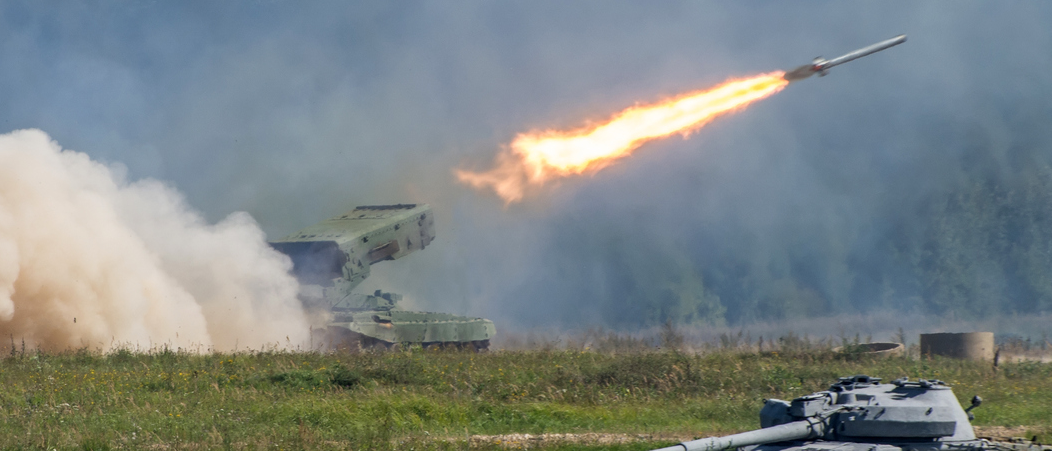The Glasgow Film Festival has unveiled the first films for its 2026 edition, taking place Feb. 25-March 8, including a retrospective program under the theme “Truth to Power” and a country focus on Sweden.
The “Truth to Power”…

The Glasgow Film Festival has unveiled the first films for its 2026 edition, taking place Feb. 25-March 8, including a retrospective program under the theme “Truth to Power” and a country focus on Sweden.
The “Truth to Power”…

Conflicts are consequential, but their consequences are often unpredictable. Major wars are often seen as turning points that bookend specific historical periods with distinctive geopolitical and technological contexts. So, it is natural to look ahead and try to identify the coming seismic shifts.
One of the lessons of history is that effective description does not lead to accurate prediction. Even so, it is still useful to look back at some of the well-known geopolitical, economic and technological turning points associated with war, to understand what this might mean for the future of conflict and its consequences.
Although President Trump claims to have ended seven or eight wars, there are plenty more for him to settle. According to the Upsala Conflict Data Program (UCDP), the number of state-based armed conflicts increased from 33 cases in 2013 to 61 in 2024, spread across 36 countries.
In addition to the high-profile wars in Ukraine and the Middle East, there are numerous less well-known conflicts in Sudan and in other Sahel states. UCDP also count 74 cases of large-scale non-state violence, such as the gang violence in Haiti, and 49 cases of one-sided conflicts. These are mainly local, but many hostilities – China and Taiwan or India and Pakistan, among others – could be flashpoints that escalate into more general conflicts.
The fault lines are there, and countries are preparing for the earthquake by increasing their military spending and preparing for long wars. Even so, it is unclear whether this will make the quake less likely. Research by Efraim Benmelech and Joao Monteiro examines the relationship between military expenditure and conflict using a dataset on armed conflict and military spending for 161 countries over 75 years (from 1948 onwards). They find that even large increases in military spending produce only modest reductions in conflict risk, despite sharply raising the expected cost of war.
The historian, Eric Hobsbawm, labelled the period that began with the French Revolution in 1789 and ended with the outbreak of World War 1 in 1914 as ‘the long nineteenth century’. During this timeframe, economies were transformed by the diffusion of new technology from the industrial revolution, and the geopolitical landscape shifted with the development of Britain’s status as an economic and naval superpower. European wars were few and short, and the world became increasingly globalised.
Despite the Anglo-German naval arms race of the early 20th century, the onset and length of World War I in August 1914 were unexpected. Even the bond markets, those sensitive indicators of geo-economic tension, did not ‘anticipate’ war until over three weeks after the assassination of Archduke Ferdinand (Ferguson, 2006). The celebrated economist, John Maynard Keynes, arranged his investments on the assumption that there would be no war. Even after the war began, famously many people expected it to be over by Christmas.
After 1918, there were probably few people in Britain who thought of themselves as living in the ‘inter-war period’. Rather, they felt that what they called The Great War had been ‘the war to end all wars’. An exception may be Keynes. In his 1919 paper, The Economic Consequences of the Peace, he mourned the loss of the globalised world of 1914. It would not achieve the same level of openness for almost three-quarters of a century.
He also denounced the punitive ‘peace’ terms imposed by the Treaty of Versailles, whose economic effects made another war very likely – the victors inviting their own destruction. But he remained sceptical of people’s ability to predict the future. Indeed, towards the end of the book he argues that “the events of the coming year will not be shaped by the deliberate acts of statesmen, but by the hidden currents, flowing continually beneath the surface of political history, of which no one can predict the outcome”.
The inter-war period – running from 1918 to 1939 – was one of economic turbulence. The world lacked a dominant economic organising power, with Britain unable and the United States unwilling to take charge. After World War 2 came the Cold War, where the world became crudely divided between capitalism and communism. In essence, the capitalist part was organised by the United States and the Bretton Woods institutions (including the World Bank and IMF), which had been designed to prevent the turbulence of the inter-war period. For Eric Hobsbawm, the long nineteenth century was followed by a ‘short twentieth century’. It many ways it began in 1914 and ended in 1991 – not with war but with the demise of the Soviet Union. Even so, this judgement may be premature.
Major wars are not only geopolitical turning points but also remove obstacles to innovation. This gives them the potential to be times of technological transformation. Drone warfare has advanced more rapidly during the two years of Ukrainian conflict than in 20 years of US government-backed R&D. The pressure of combat speeds up arms races as evaluation of safety and reliability is streamlined, and moral and ethical issues are sidelined in favour of rapid product delivery.
The pressure to innovate applies not just to lethal weapons. The canning process was invented after prolonged research by Nicolas Appert of France in 1809, in response to Napolean needing a way of preserving food for his army and navy. It was many years later that the can-opener was invented, with soldiers using their bayonets in the first instance.
Many medical advances have also come from the experience of war, where the need to treat large numbers of wounded patients prompted experiment and innovation. For example, wars saw big improvements in wound debridement, prosthetic limbs and plastic surgery, as well as the mass production of penicillin during World War 2.
Manufacturing has also tended to change during periods of conflict. Process innovations, such as interchangeable parts and mass production, were actually introduced in UK naval arsenals and US gun manufacturers before being adopted by Henry Ford. The division of labour has its roots in the business of warfare.
The importance of military procurement for technology development prompted Vernon Ruttan to ask ‘Is War Necessary for Economic Growth?’. Writing at the turn of the century, he argued that war and the threat of war would be a less powerful inducement to technical change in the first half of the 21st century than it was during the last half of the 20th century. Whether or not his forecast proves correct, innovation does continue without war, and in many areas, civilian technology is well ahead of the military. This is partly because of the slowness of the military procurement process (compared with the short life-cycles of generations of electronics, for example).
Even areas like cryptography, once the preserve of military and spooks, have become dominated by commercial applications. A spin-off from military research, DARPA (the US Defense Advanced Projects Research Agency) developed the internet, and a spin-off from scientific research CERN (the European Organisation for Nuclear Research) developed the World Wide Web. While GPS was originally a military system, civilian use generated a range of complementary systems – many of which are now used by the military.
Perhaps it is not surprising that defence R&D is a major source of innovation. It is the largest component of publicly funded R&D in many countries, including the United States, the UK and France. If those resources had been spent on civil R&D – without the secrecy restrictions and diversion of scarce scientific and technical skills to the military – there may have been even more ‘innovations’. As an example of the effect of secrecy, the RSA public key cryptosystem – a method for data encryption – was discovered by Clifford Cocks at GCHQ in 1973 but was kept secret. It was then re-discovered independently by Ron Rivest, Adi Shamir and Leonard Adleman of MIT, by whose initials it is known, in 1977.
Given the importance of such turning points, it is tempting to try and forecast the coming conflicts and their geopolitical and technological consequences. But as Lawrence Freedman demonstrates in The Future of War: A History, we are very bad at predicting the form of future conflicts. Some of the most perceptive analysts of war have been unfortunately overtaken by events.
Immanuel Kant’s 1795 book, Perpetual Peace: A Philosophical Essay, argues that republican governments would be more inclined to promote peace and commerce, and that a union of such states could promote pacifism. Despite being followed by the Napoleonic wars, the argument remains influential and is echoed by the ‘Democratic (or Capitalist) Peace’ hypothesis, that democratic and open-market states do not tend to fight each other.
Norman Angell’s 1910 book, The Great Illusion, points out that economic integration and the cost and destructiveness of modern weapons made war so expensive that no country could gain from starting one. Although he argues that war was unprofitable rather than impossible, the book is seen by some as an incorrect forecast. While he was correct about the expense and destruction involved, that did not stop World War 1. Governments do not always understand or act in their country’s best economic interests, after all.
While World War 2 was not as unexpected as World War 1, expectations about the effects of technology, particularly about the effects of bombing, proved wrong. It was physically more destructive than predicted, but, with the exception of the atomic bomb, strategically less decisive.
The atomic bomb shaped much Cold War prediction. The black humour of Dr Strangelove and Tom Lehrer reflected widespread perceptions of likely nuclear proliferation and Armageddon. By the 1960s, new nuclear powers arrived about every five years: the United States in 1945, Russia in 1949, the UK in 1952, France in 1960, and China in 1964. Optimists – hoping the trend would continue – expected about 17 nuclear powers by 2025. Pessimists – assuming that every country that could build a nuclear weapon would – expected about 50 nuclear powers by 2025. Both groups would be astonished to know that there are now only nine nuclear powers (see Figure 2), and that three Soviet republics – Ukraine, Belarus and Kazakhstan – surrendered their nuclear weapons.
In his 2011 book, The Better Angels of Our Nature, Steven Pinker presents data to argue that violence has declined around the world, although he did not claim the trend was inevitable. Even so, given the current prevalence of conflict, he is in danger of suffering the same fate as Norman Angell and being remembered for an incorrect forecast.
The size distribution of wars, like that of earthquakes, is ‘fat-tailed’ – characterised by rare but extreme events. The fact that there have only been minor rumbles recently does not necessarily mean that the big one is not coming. There are reasons to be cheerful; there is less nuclear proliferation than expected, the Soviet Union departed peacefully, and World War 3 has not yet arrived.
Because of the pace of events, commentary from think tanks is often the most effective source:

Lovable, the Stockholm-based AI coding platform, is closing in on 8 million users, CEO Anton Osika told this editor during a sit-down on Monday, a major jump from the 2.3 million active users number the company shared in July. Osika said the…

Rebecca Miller for Forbes
Most birthday party guest lists don’t read like The Forbes 400 list, but on Saturday night Beverly Hills became Billionaires’ Row as the rich and famous gathered to celebrate Kris Jenner’s 70th birthday.
The…


Special Meeting of Shareholders to be held on December 9, 2025
Teck’s Board of Directors Unanimously Recommends Shareholders Vote “FOR” the Merger
Vancouver, B.C. – November 10, 2025 – Teck Resources Limited (TSX: TECK.A and TECK.B, NYSE: TECK) (“Teck”) today announced the filing and mailing of its notice of meeting, management information circular and related meeting materials (collectively, the “Meeting Materials”) in connection with its upcoming special meeting of shareholders to be held on December 9, 2025 (the “Meeting”), to approve the proposed merger of equals (the “Merger”) with Anglo American plc (“Anglo American”). The Meeting Materials, which include a copy of the interim order, can also be accessed online on Teck’s website at www.Teck.com/reports and under Teck’s issuer profiles on SEDAR+ at www.sedarplus.ca and EDGAR at www.sec.gov.
Teck’s Board of Directors urges all Teck shareholders to carefully review the Meeting Materials and recommends that Teck shareholders vote their shares “FOR” the Merger.
The Merger will create Anglo Teck, a global critical minerals leader headquartered in Canada and top five global copper producer with a world-class portfolio and outstanding future growth optionality. Through the Merger, Teck expects to deliver tremendous long-term value for its shareholders. Importantly the all-stock consideration will allow Teck shareholders to participate in the enormous upside potential of the combined company.
“This merger presents a unique opportunity to create a global mining powerhouse headquartered in Canada, offering our shareholders the chance to participate in a larger company with greater resilience, growth potential and strategic flexibility for the long-term,” said Sheila Murray, Chair. “Your Board unanimously recommends this merger, as we firmly believe it is the absolute best path forward to realize the full potential of our strategy and our portfolio.”
“We are confident this merger of equals will generate tremendous value for Teck shareholders as well as create significant economic opportunity in Canada, underpinning our Board’s unanimous determination that the combination is the best path forward for our shareholders and all of our stakeholders,” said Jonathan Price, President and CEO. “We invite all shareholders to carefully review the meeting materials and vote for this transformative merger to create a new global critical minerals champion with significant copper exposure, leading growth, and incredible near, medium and long-term value creation potential.”
Key Highlights of the Proposed Merger:
1On an average annual basis from 2030-2049 but expected to continue beyond this period (100% basis).
The Merger, which was announced in September 2025, is expected to close within 12-18 months from the date of announcement, subject to shareholder approvals and customary closing conditions, including approval under the Investment Canada Act and applicable competition and regulatory approvals in various jurisdictions globally. On November 3, 2025, the Supreme Court of British Columbia granted an interim order (the “Interim Order”) in connection with the Merger, which authorizes the calling and holding of the Meeting. A copy of the Interim Order is included in the Meeting Materials.
The Merger is supported by Temagami Mining Company Limited, SMM Resources Incorporated, Dr. Norman B. Keevil and the directors and executive leadership team of Teck, who have collectively agreed to vote shares representing approximately 79.8% of the issued and outstanding Teck Class A common shares and approximately 0.02% of the issued and outstanding Teck Class B subordinate voting shares (as of the record date for the Meeting) in favour of the Merger at the Meeting.
Board Recommendation
The Teck Board of Directors has unanimously recommended that shareholders vote “FOR” the Merger, having determined that the Merger is in the best interests of Teck, is fair to Teck’s shareholders, and presents a highly attractive and unique opportunity to create shareholder value above the value to be created from Teck’s standalone trajectory, while lowering downside risk and preserving strategic flexibility.
Meeting Location and Voting Details
The Meeting will be held at Suite 400-550 Burrard Street, Vancouver, British Columbia, Canada and virtually at: https://virtual-meetings.tsxtrust.com/1856 on December 9, 2025 at 11:00 a.m. (Pacific Time).
Record Date
The Teck Board has set the close of business on October 20, 2025, as the record date for determining Teck shareholders who are entitled to receive notice of and vote at the Teck Meeting. The Meeting Materials provide important information relating to the Merger, voting procedures and how to attend the Meeting. Shareholders are urged to read the Meeting Materials carefully.
Shareholder Questions
If you have questions, including the procedures for voting, please contact our proxy solicitation agents:
Shareholders Located in Canada
Laurel Hill Advisory Group
Toll-Free: 1-877-452-7184
Text Message: 1-416-304-0211
Email: assistance@laurelhill.com
Shareholders Located Outside of Canada
Innisfree M&A Incorporated
US Toll Free: 1-877-750-0510
Outside US: +1-412-232-3651
Banks and Brokers: 1-212-750-5833
Non GAAP Measure
A certain financial performance measure used in this press release – namely underlying EBITDA – is not prescribed by IFRS. This non-GAAP financial measure is intended to provide additional information only and does not have any standardized meaning under IFRS and may not be comparable to similar measures presented by other companies. This non-GAAP financial measure should not be considered in isolation or as a substitute for measures of performance prepared in accordance with IFRS.
Forward Looking Statements
This news release contains certain forward-looking information and forward-looking statements as defined in applicable securities laws (collectively referred to as forward-looking statements). These statements relate to future events or future performance. All statements other than statements of historical fact are forward-looking statements. The use of any of the words “anticipate”, “can”, “could”, “plan”, “continue”, “estimate”, “expect”, “may”, “will”, “would”, “project”, “predict”, “likely”, “potential”, “should”, “believe” and similar expressions is intended to identify forward-looking statements. These statements involve known and unknown risks, uncertainties and other factors that may cause actual results or events to differ materially from those anticipated in such forward-looking statements. These statements speak only as of the date of this news release. These forward-looking statements include, but are not limited to, statements concerning the anticipated benefits and synergies from the proposed Merger, the expected effects of the Merger on Anglo American and Teck, future production levels, the expected timing of completion of the Merger, and other statements that are not historical facts.
These statements are based on a number of assumptions, including, but not limited to, assumptions regarding general business and economic conditions, future outlook and anticipated events, such as the ability of Anglo American and Teck to complete the Merger, the ability of Teck and Anglo American to obtain all required regulatory and court approvals, the ability of Teck and Anglo American to obtain respective shareholder approval for the Merger, the ability of Teck and Anglo American to obtain all other necessary approvals, the strategic vision of the merger between Teck and Anglo American following the closing of the Merger, expectations regarding exploration, production and operation potential, expectations with respect to production capabilities and future financial or operating performance of Teck and Anglo American following the Merger, expectations with respect to Teck’s current production and cost guidance and previously disclosed updates, the potential valuation of the merger of Teck and Anglo American, the expected synergies between Teck and Anglo American, the expected revenue from the synergies between Teck and Anglo American, the accuracy of the pro forma financial position and outlook of Teck and Anglo American following the closing of the Merger, the success of the new board and management team, the satisfaction of the conditions precedent to the Merger, the future financial or operating performance of the merged Teck and Anglo American, the expected EBITDA uplift, the expectations around the headquarters of the combined entity being in Canada, the expectations of the results and success of the Investment Canada Act commitments, the expectations with respect to receiving Investment Canada Act approval, the assumptions surrounding the proposed Investment Canada Act commitments, the expectations with respect to the proposed investments by the combined company in Canada, the potential of Teck and Anglo American following the Merger to meet industry target, public profile expectations, future plans, projections, objectives, estimates and forecasts and the timing related thereto and the expectations surrounding the combined companies long-term strategy. The foregoing list of assumptions is not exhaustive. Events or circumstances could cause actual results to vary materially.
Forward-looking information is based on the information available at the time those statements are made and are of good faith belief of the officers and directors of Teck and Anglo American as of the time with respect to future events and are subject to risks and uncertainties that could cause actual results to differ materially from those expressed in the Forward-looking information. Factors that may cause actual results to vary materially include, but are not limited to, the possibility that the Merger will not be completed on the terms and conditions, or on the timing, currently contemplated, and that it may not be completed at all, due to a failure to obtain or satisfy, in a timely manner or otherwise, required regulatory, shareholder and court approvals and other conditions to the closing of the Merger or for other reasons, the risk that competing offers or acquisition proposals will be made, public perception of the Merger, market reaction to the Merger, the negative impact that the failure to complete the Merger for any reason could have on the business of Anglo American or Teck, general economic and market conditions, including interest and foreign exchange rates, global financial markets, the impact of pandemics or epidemics, changes in government regulations or in tax laws, industry competition, technological developments and other factors described or discussed in Anglo American’s or Teck’s disclosure materials filed with applicable securities regulatory authorities from time to time.
Teck assumes no obligation to update forward-looking statements except as required under securities laws. Further information concerning risks, assumptions and uncertainties associated with these forward-looking statements, the Merger and Teck’s business can be found in Teck’s management information circular in respect of the Meeting filed under Teck’s profile on SEDAR+ (www.sedarplus.ca) and on EDGAR (www.sec.gov).
About Teck
Teck is a leading Canadian resource company focused on responsibly providing metals essential to economic development and the energy transition. Teck has a portfolio of world-class copper and zinc operations across North and South America and an industry-leading copper growth pipeline. We are focused on creating value by advancing responsible growth and ensuring resilience built on a foundation of stakeholder trust. Headquartered in Vancouver, Canada, Teck’s shares are listed on the Toronto Stock Exchange under the symbols TECK.A and TECK.B and the New York Stock Exchange under the symbol TECK. Learn more about Teck at www.teck.com or follow @TeckResources.
Investor Contact:
Emma Chapman
Vice President, Investor Relations
+44.207.509.6576
emma.chapman@teck.com
Media Contact:
Dale Steeves
Director, External Communications
236.987.7405
dale.steeves@teck.com
25-30-TR

In a packed theater at Nitehawk Prospect Park, MG Evangelista — one of four recipients of Netflix and NewFest’s 2025 New Voices Filmmakers Grants — took a moment to share a message from the co-writer of their film, Anino: “Long live the…